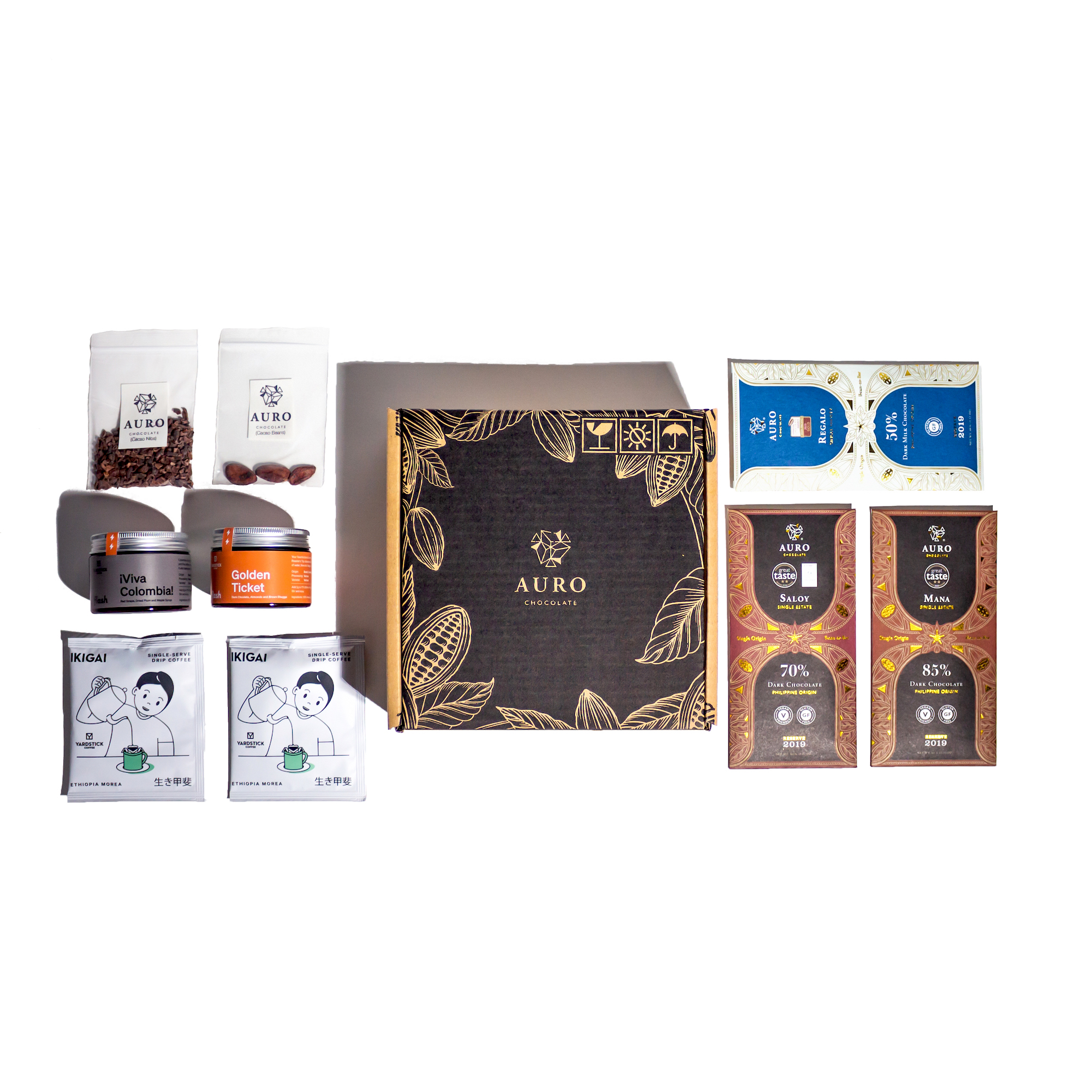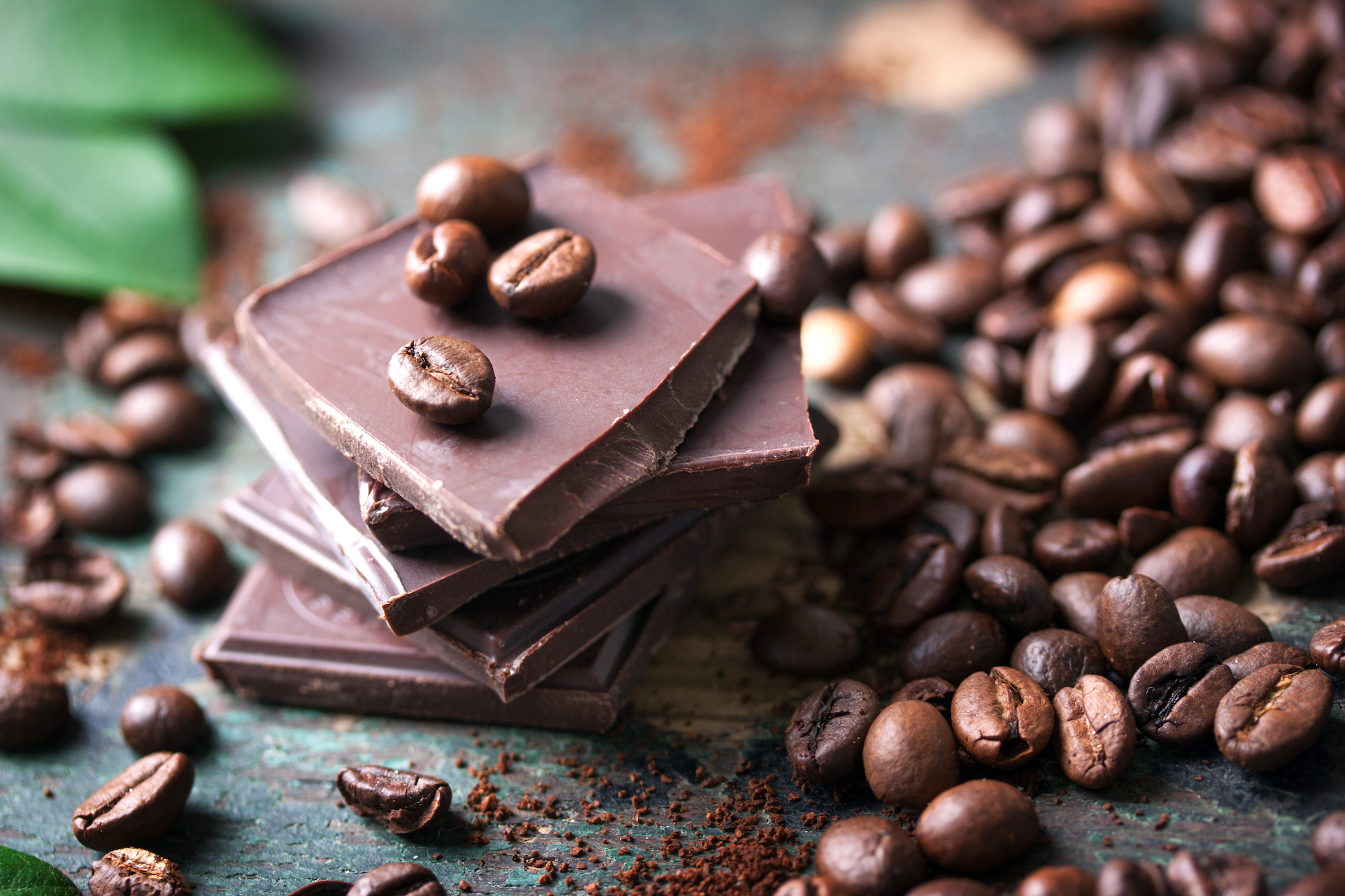When it comes to food pairings, chocolate and coffee seem like an obvious choice. Humans have cultivated cacao and coffee plants for centuries, eventually developing them into products we can hardly live without. Our obsession with them has even warranted scientific research about the harms and benefits of our favorite cup of coffee or chocolate bar.
But one could wonder, could chocolate and coffee together be too much of a good thing? Are we not better off savoring them on their own?
Award-winning chocolate company Auro Chocolate and trailblazing third-wave cafe Yardstick Coffee would like to argue otherwise. For their first collaboration, the two brands organized an online chocolate and coffee pairing class where they offered a few sets of their products as well as invaluable insights on how to make a chocolate and coffee pairing even better.

The class is held over a Zoom call with Auro co-founder Kelly Go and Yardstick co-founder Andre Chanco. The first session was held last Aug. 14, with another scheduled for Oct. 2.
To enjoy the pairings at home, participants receive kits with the chocolate and coffee before the class. For those uninitiated in coffee brewing, not to worry: Yardstick delivers its versions of specialty instant coffee, so all you need are hot water and cups to serve yourself.

Yardstick put together its Flash coffee in Golden Ticket and Viva Colombia, and its Ethiopia Morea coffee in a drip bag. These were paired with Auro’s Regalo, Mana, and Paquibato dark chocolates respectively.
It is an introductory course, so expect chocolate and coffee history 101 and industry insights. Terms like “tree to bar” and “flash freeze dried” become more tangible as you learn how the products in front of you are made.
A safe space for newbie tasters
For the first class last Saturday, Go and Chanco kept it casual as they shared their expertise. Go allayed the fears of tasting newbies, dubbing the session “a safe space” where no one had to worry about “sounding smart.”
Even with tasting guides that were provided in the kit, being at a loss for words to identify what you smell or taste does happen. Chanco advised that tasting a variety of food at a market, like ripe and unripe fruit, can sharpen your tasting skills.
For each pair, the chocolate was evaluated first in terms of look, smell, and taste. The same went for the coffee afterward, and then the hosts and participants related what they thought of the pairing. Go shared quite the mood booster: Melt the chocolate in your mouth then take a sip of coffee for a mocha effect.
When it comes to pairing chocolate and coffee, the hosts advised putting together flavors that contradict or complement each other. For example, the pour-over Ethiopia Morea coffee, which has some sweet jasmine notes, was paired with a darker chocolate like Paquibato (70 percent cocoa). With the coffee, Paquibato’s caramel flavor became more noticeable.
Among the pairings, Regalo dark chocolate and Golden Ticket were the crowd favorites. The creamy Regalo (50 percent cocoa) won over dark chocolate skeptics, while Golden Ticket, which is less bitter and acidic, had participants raving that they could have it every day. The two together are a rainy day comfort pair.
When it comes to pairing chocolate and coffee, the hosts advised putting together flavors that contradict or complement each other. For example, the pour-over Ethiopia Morea coffee, which has some sweet jasmine notes, was paired with a darker chocolate like Paquibato (70 percent cocoa). With the coffee, Paquibato’s caramel flavor became more noticeable.
While each pairing is satisfying in its own right, the class goes beyond taste and delves into the stories of how each product was crafted.
Go shared that the Paquibato chocolate was made with cacao from the farm of the late Mang Jose Sugban. He is the Davao farmer whose work was recognized as one of the Top 20 Best Cacao Beans in the World, and even flew to Paris to receive the award himself.
When it comes to making quality products in the Philippines, Chanco noted that as with chocolate, technology has been a boon to smaller companies. For instance, even before the pandemic, Yardstick was able to fulfill customer’s coffee cravings at home with its own high-end coffee capsules.
Sustainability is the future
Despite their industries being dominated by large global companies, both Auro and Yardstick have been able to carve their own spaces for Philippine craft chocolate and specialty coffee. Their successes in working closely with farmers prove that sustainability is the future.
After launching in 2017, Auro has helped put local cacao farming on the map with internationally recognized chocolates. Yardstick is constantly upping the coffee culture in the country with its specialty creations, workshops, and equipment.
As far as pairings go, this one’s a team-up that’s for more than just your tastebuds.
To sign up for the next pairing class in October, visit Auro’s website.





